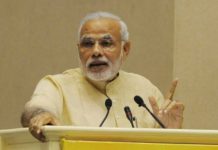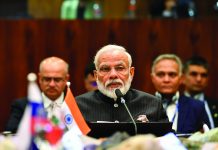[cycloneslider id=”the-big-stage-player”]
The precious few who turned out at the Bangabandhu National Stadium in Dhaka on 16 February 2004 weren’t expecting much of a contest. The Under-19 Cricket World Cup, much like the real thing, has a first week dominated by utter mismatches, and nobody expected Scotland to put up a fight against India, which had three months ago won the Asia U-19 title and were one of the tournament favourites.
Eighteen-year-old Shikhar Dhawan, playing his first India U-19 match, wasn’t taking things lightly though. Disappointed to have been left out of the Indian team that had won the Continental Trophy in Pakistan, he had a point to prove. In two seasons of the Cooch Behar Trophy, Dhawan had averaged 55.42 and 74.00, respectively, for his team in Delhi, with four centuries and two half centuries in 14 innings. The batting had failed in that tournament, not managing 200 in any of the games. Dhawan had finally been named in the World Cup squad. “He was scoring consistently,” says Tarak Sinha, his longtime coach, “but was frustrated at not being selected. He wanted a chance to prove himself.”
Sinha, one of India’s most respected coaches, founded Delhi’s famous Sonnet Cricket Club in 1969. The club is the stuff of Delhi sporting lore; with no permanent ground and few facilities at his disposal — the club currently operates at the Sri Venkateswara College’s ground — Sinha has carried on his mission to “teach correct cricket and help junior players move ahead”, taking in kids from all social backgrounds. His pupils include former India players Manoj Prabhakar, Raman Lamba, Ashish Nehra, Ajay Sharma, Aakash Chopra and over a hundred first-class cricketers.
Sinha first saw Dhawan play at an Under-12 tournament his club had organised. He saw a left-handed wicketkeeper batsman with potential. Dhawan scored a hundred in the final. Atul Wassan, who played for the club at the time, remembers him as an “aggressive, careless kid” (he qualifies it by saying that he has grown into a “wonderfully promising batsman”). Sinha tried to temper that aggression and teach him to build an innings. He got him to drop the wicketkeeping and focus on opening the batting.
Years later, in a foreign land, on a foreign pitch, the match against Scotland was Dhawan’s big chance of getting a call to the Indian senior team. Started in 1998, the tournament had entered the national consciousness once India won it in 2000. Eight months later, Yuvraj Singh, who had made his name in that triumph, was playing for India in the ICC Knockout Trophy in Nairobi. Facing a formidable Australian attack that had cheaply dismissed Sachin Tendulkar, Sourav Ganguly and Rahul Dravid and the team tottering at 90 for 3, Yuvraj blazed his way to 84 off 80 balls, then effected an outstanding run-out of the danger man Michael Bevan.
In the 18-year-old Yuvraj, the world had found the prototype of the 21st century Indian cricketer. Unlike in the past, when Indian batsmen would acknowledge a cracking straight drive off a fast bowler with a nod of the head, the new-age Indian cricketer was young, aggressive and brash, someone much like Virat Kohli and Shikhar Dhawan today. Over the years, in an almost Darwinian manner, the nature of Indian cricketers, and thus Indian cricket, would completely change. Yuvraj’s sudden rise to fame also legitimised the U-19 World Cup as a platform to build an international career on. It helped that the tournament would be televised for the first time. Today, the tournament is keenly watched for future sensations.
“It wasn’t always so, but in recent years, a good showing certainly gives you a boost when it comes to promotion to the senior side,” says Suresh Menon, editor of Wisden India Alamanack. “This is partly because of the more harmonised selection process where selectors at various levels — and the manager of the U-19 team — are in regular touch, and partly because of the media coverage. Names of those who do well are thus injected into the subconscious of the decision-makers.”
That India-Scotland match proved to be much more than a mismatch. Opening the batting, Dhawan and Robin Uthappa put the hapless Scots to the sword, racing to a 175 partnership in just 24 overs. Once Uthappa fell for a 78-ball 97, captain Ambati Rayudu continued in the same aggressive vein, making 53 off 51 balls. After his dismissal, at 261/2, fellow southpaw Suresh Raina walked in and scored an incredible 90 off 38 balls. India posted 425 in their 50 overs and Dhawan was unbeaten on 155. Scotland would struggle to 155/8 in their 50 overs.
Two weeks later, Dhawan made 120 against hosts Bangladesh. A week after that, he posted 146 against Sri Lanka. India would lose to Pakistan in the semifinal, but Dhawan had done enough to prove himself. He scored 505 runs in the tournament, 122 more than Alastair Cook, the next highest run scorer, and was named Player of the Series. “He had a lot of application,” says Robin Singh, who coached that India U-19 side. “He had the desire to play for India, and most importantly, he had the appetite to score big runs.”
Even the most hardened cynic would forgive Dhawan for thinking that his Yuvraj moment was right around the corner and a call to the national team was just a matter of time. Eventually, the call would take another nine years. When his turn eventually came, it was on Yuvraj’s home ground of Mohali; the opponents, again, were Australia. But this was a different Australian side from the one Yuvraj took apart that day in Nairobi. The Aussies were, like India, going through a difficult transition at the end of a golden generation. The fearsome bowling attack of Glenn McGrath, Shane Warne, Nathan Bracken and Jason Gillespie had been replaced by the likes of Mitchell Starc, Peter Siddle, Moises Henriques, Nathan Lyon and Xavier Doherty, all competent bowlers, but by no means the stuff of batsmen’s nightmares. The team, as a whole, was desperately inexperienced, with captain Michael Clarke the only one to have 50 Test caps to his name.
Andrew Brettig summed it up precisely in his series preview for Cricinfo. “So in circumstances ‘less than ideal’, a favourite recent phrase of those in Cricket Australia’s team performance hierarchy,” he wrote, “the 17 named for India provide the captain Michael Clarke with a vast array of options for the various scenarios that may lie ahead of him across the matches in Chennai, Hyderabad, Mohali and Delhi. Clarke wants those options because he is not entirely sure what is in store, nor how his players will respond to what they find.”
Australia’s woes were, however, the last thing on Indian minds at the time. The knowledge that they weren’t the force to be reckoned with was, of course, comforting, but the series was chiefly about payback. In the immediate aftermath of their 2011 World Cup triumph, India had suffered ignominious 4-0 whitewashes in England and Australia that cost it its hardearned primacy on the ICC Test standings. They were defeats that stuck in the national craw; for the first time in years, India didn’t look like a competitive side — especially on the morning of the first day of the series — but the bumbling overseas Test outfit that we had made our peace with. The team had been comprehensively outclassed in almost every department.
With depressing predictability, the BCCI’s party line was to blame the conditions. The fast, swinging pitches of England and Australia had undone the Indian batsmen, they said.
Writing in Hindustan Times, former Test batsman Sanjay Manjrekar explained this drop in performance. “How do you gauge a tennis player’s chances of winning Wimbledon after he has won at Roland Garros?” he wrote. “Roland Garros and Wimbledon are like home and overseas cricket for an India cricket player or team. Although the sport remains the same, these are two completely different challenges, two different ball games.” It would be different, the consensus went, when the teams met in the return series, which the vagaries of the ICC Future Tours Programme decreed would both take place in the 2012-13 season itself.
A fact that was ignored in most such arguments was that much like the playing surfaces in tennis, pitches across the world are gradually becoming homogenous. Apart from the traditional bowlers’ hunting grounds, most Test cricket today is played on tracks that are fairly placid, offering assistance to fast bowlers only as much as the weather (read humid or dry conditions) and the state of the ball permit. And just like the same names feature in the latter stages of both the French Open and Wimbledon, it is entirely possible for a team to be competitive anywhere in the world. England and Australia held the edge, you could argue, but it didn’t explain the fact that India managed to cross 300 only twice in 16 innings on the same pitches where they conceded over 300 at least once in every Test.
Nevertheless, curators at the venues for the coming Tests began to prepare low and slow rank turners, built to aid India’s fairly efficient default plan of a tandem of spinners running through a batting order that had grown up playing fast, moving balls on bouncy pitches. It backfired spectacularly in the series against England; the Indian batsmen found Graeme Swann and Monty Panesar well nigh unplayable. The tweaker duo combined to take 37 wickets, three more than India’s two main spinners, as England overcame an opening Test defeat in Ahmedabad to comprehensively win at Mumbai and Kolkata and take the series 2-1. Revenge would have to wait.
There was a difference in the Indian side playing against England and the one playing against Australia. Against England, though the Indian batting wore a completely different look, there were still some chinks. Rahul Dravid and VVS Laxman retired in the months following that last Adelaide Test, opening up two slots in a middle order that had remained untouched — apart from injury or Sourav Ganguly’s ouster and, later, retirement — for over a decade. Cheteshwar Pujara had staked claim to the No 3 position with 438 career-defining runs against England. Yuvraj had initially been given the other place as part of his comeback from cancer, but was dropped after struggling against England. Ravindra Jadeja had, despite his many doubters, replaced him in the last Test as a batting all-rounder.
There was no change at the top, however, as India persisted with the highly successful opening partnership of Virender Sehwag and Gautam Gambhir. The pair had been an integral part of India’s ascendancy in the Test rankings, scoring over 4,000 runs at an average of 52.69. After years of uncertainty and rotation, Gambhir’s arrival into the Test side in 2004 had finally brought stability to this crucial job. A quick wicket had been de rigeur in the Indian side, a frequent trigger for a total collapse. The sight of Dravid marching in determinedly at the fall of a first wicket soon became a less frequent image.
The success of this partnership was a major roadblock to Dhawan’s India hopes. His heroics had been two years too late; he would spend most of his career, like every other decent opening batsman in the country, in Sehwag and Gambhir’s shadow. He did what he could, emerging as a prolific opener for Delhi in the domestic circuit (part of a rotation that included not just Gambhir and Sehwag, but also fellow Sonnet alum Aakash Chopra). He played several decent seasons for Delhi, but lacked the breakout seasons that were propelling others firmly into national reckoning. Of his U-19 teammates, he saw Uthappa, Rayudu, Raina, RP Singh and VRV Singh break through to the national side before him. Every time a place would open up at the top, someone else would have better credentials, better form or a better reputation and take it. The appetite for runs was still there, but it didn’t seem good enough.
Chopra, himself a former India Test opener, articulated the problem in an assessment of prospective openers for Cricinfo last year. “Dhawan is a talented player who bats with a lot of flair, but his technique isn’t tight enough to succeed in trying conditions in the longer format,” wrote Chopra. “His first-class career graph highlights a sequence of big scores followed by prolonged barren patches, which indicates that his scoring depends a lot on form/momentum and not so much on technical prowess. Since I’ve watched him from close quarters, I can say with some authority that his only response to poor form is to go on the offensive, which may not be such a bad thing in shorter formats but doesn’t always work in the long format, especially for an opener. Scoring one century every 10 first-class innings isn’t a Test selection performance.” Ironically, Chopra, known for his dour technique, soon found himself out of favour of the national selectors due to his inability to accelerate the scoring rate when the situation demanded.
The frustration of not making it to the national side, Sinha says, showed in Dhawan’s performance. “The rejection got to him,” he says. “I had to explain to him that runs never go to waste. That, eventually, people would notice his performances.” His scores for Delhi suffered. Even in the triumphant Ranji season of 2007-08, his name didn’t stand out. Gambhir, Chopra, Mithun Manhas and Kohli all outscored him. Kohli’s performance even earned him a berth in the national side as a middle-order batsman.
It was not until three years later that things started looking up. The 2010-11 season was a disastrous one for Delhi; the team failed to make it to the knockout stages of the Ranji Trophy. Dhawan though was able to make it to the Indian team, riding largely on his exploits in the India A tour of England, which included an aggressive 179 against Yorkshire. He made his debut during Australia’s whistlestop tour that year. In the only ODI played in the three-match series (the other two were washed out), Dhawan was bowled second ball by Clint McKay for a duck.
Back on domestic duty, he struggled to get runs, averaging 44 and scoring only one century in seven games. For a side that had lost Gambhir, Sehwag and Kohli to national duty — Chopra moved to Rajasthan — Dhawan’s inability to steer an inexperienced batting order seriously dented Delhi’s chances. In a crucial game against Railways, with Delhi needing 136 to win and secure a spot in the quarterfinals, he played a terrible shot to get out for 14. Manoj Prabhakar, the then coach of Delhi, was furious. Delhi eventually folded for a paltry 113. Dhawan would then be selected for a depleted ODI side to tour the West Indies where he scored 69 runs in four innings. That September, the selectors ignored him for the team that lost 3-0 to England.
The twin disappointments would have been devastating for any cricketer. Dhawan reportedly considered giving up any hope of playing for India (though he denies it now). Sinha says the criticism only hardened his resolve. He decided to shift focus from his national prospects back to the process of accumulating runs. In the Irani Trophy later that year, he scored 177 and 155 as Rest of India trounced Rajasthan by 404 runs. The rest of the season, however, was underwhelming.
Dhawan’s renewed focus bore fruit in 2012-13. In the Duleep Trophy quarterfinal against West Zone, he scored 101 and 50 in the two innings. He followed that up with 121 against Central in the semifinal, which North lost because of a first-innings deficit. He then scored 461 runs in the Ranji Trophy, with two centuries. The second of these was against Maharashtra, on a pacy Roshanara Club ground. Maharashtra, which had a slender three-run first innings lead, set Delhi a challenging 270 for victory. Dhawan scored an unusually cautious 116, shepherding his side to an easy seven-wicket win. Afterwards, he told reporters that the dismissal against Railways had been on his mind during the knock.
Dhawan’s latest purple patch was perfectly timed. With Sehwag and Gambhir woefully out of form, a clamour had been growing for a change at the top of the Test batting order. Both openers had averaged around 31 in the two previous years; Gambhir hadn’t scored a century since 2010. The strong foundations on which the team was used to building an innings were missing with alarming regularity.
Finally, Gambhir was dropped for the Australia series and Dhawan was called up as his replacement, but he would have to wait for two more matches. In the first two Tests, Sehwag opened the innings with Murali Vijay. But after scores of 2, 19 and 7, he too was dropped. In the space of two weeks, India’s most successful opening pair had been sent home. Dhawan’s Yuvraj moment had come, even if it had taken the entirety of Yuvraj’s career.
India went into that third Test 2-0 up, a draw away from regaining the Border-Gavaskar Trophy. Clarke’s men had fought hard, but fallen short at crucial junctures. Ravindra Jadeja, brought into the team as a batting all-rounder, had suddenly emerged as the most unplayable spinner since Ajantha Mendis, combining with Ravichandran Ashwin and Harbhajan Singh to take all 20 Australian wickets in the first Test at Chennai and 14 in the second at Hyderabad. Centuries by captain MS Dhoni and Kohli at Chennai and Vijay and Pujara at Hyderabad had bolstered an otherwise shaky batting. Australia’s bowlers had been able to string together wickets, but looked thoroughly inept when faced with any established partnership.
Dhawan, who received his Test cap from Tendulkar, came out to open the batting with Vijay an over before lunch on the third day. After a first-day washout, Australia had cobbled together a creditable 408 thanks in no small part to Starc’s rearguard 99, the result of some aggressive batting on the third morning. As Starc ran in to bowl the first ball to Vijay, the ball slipped from his hand and struck the stumps at the non-striker’s end. Dhawan had been backing up and was caught outside the crease. The Australians didn’t appeal — even if they did, it’s unlikely Dhawan would have been given out since a Mankading by definition must be intentional — but for a second, it seemed like that hard-earned debut might, like his ODI one, end in a duck.
When he took guard, it took six balls for Dhawan to make his intentions clear. A good length ball from medium-fast bowler Peter Siddle was dispatched through the covers in typical left-hander elegant fashion, a drive played on the up with no follow through. Three balls later, a feeble short delivery was pulled off the front foot. One by one, Dhawan began to dismantle each Australian bowler, taking advantage of fabulous batting conditions to score freely. But this was no manic slog; hardly a shot was hit into the air. He reached 50 off exactly 50 balls. Then in the 23rd over, he hit Doherty for four boundaries, all of them along the ground. Three overs later, after his first real stroke of good fortune — a thick inside edge narrowly missing the stumps and going for four — he was on 98. An almost-suicidal run at 99 forced four overthrows. Suddenly, with two overs still left before tea was called, the 28-year-old Dhawan had become the fastest Test centurion on debut.
Dhawan would go on to make 187, the highest score by an Indian on debut. India earned a hard-fought victory in the last hour of the day. It was the manner in which Dhawan scored his runs, rather than the runs themselves, that held all those who saw it in awe. At its best, his batting was a perfect display of controlled aggression. His risks, if any, were calculated; he put a price on his wicket. It was an innings, Sinha says, that exemplifies how thinking has changed in Test cricket.
Former India pacer Atul Wassan agrees with Sinha. “With new players like Dhawan, Kohli and Pujara,” he says, “the advantage is that being counterattacking has become a benchmark. Hitting a century in one session has become a norm. Also, these new players have the unprecedented sense of financial security due to tournaments like the IPL and they can afford to lead a cricketer’s lifestyle even when not playing for the national team. This makes them more natural and confident unlike cricketers before them.”
Dhawan proceeded to follow through with his Cinderella act by disappearing before the ball was over. He fractured his hand while fielding, and was ruled out for the rest of the series. Pujara was promoted to opener for what would have been Dhawan’s first Test in his hometown of Delhi. A nation in awe eagerly waited for his return. It came in the IPL, when despite missing seven matches, he was the leading scorer for the Sunrisers Hyderabad, taking them into the play-offs. He was then named in the team for the Champions Trophy, where he picked up right where he had left off. In the first match of the tournament, he hammered his way to 114 off 94 balls against South Africa. The West Indies fared little better, as he scored an almost run-a-ball century in the next match. He would lead the batting charts in the tournament, plundering 363 runs at an average of 90. Mohali, it was made abundantly clear, was no flash in the pan.
As Dhawan prepares for the first real test of his fledgling international career in South Africa, he can look back at a breakout year any cricketer, no matter how experienced, would kill for. In 23 ODIs this year, he has 1,150 runs at an average of almost 55, the fourth highest aggregate in the world (a sign of India’s dominance in the limited-overs game is that three of the top four are Indians). He has scored five centuries, all of them leading to wins, and a blitzkrieg 248 in a 50-over game against South Africa A. “He knows that he belongs,” says Suresh Menon. “That makes a difference.” Menon is confident that Dhawan has the technique to survive against Dale Steyn and Co, probably the first world-class bowling attack he will face in his international career. But he cautions against expecting too much for “even the Tendulkars and Dravids weren’t great successes on every tour of Australia and South Africa”.
The myth of the brass ring, the notion of those once-in-a-lifetime opportunities that determine the legacy you leave on your sport, is a powerful one. Shikhar Dhawan has, in the course of the past year, lived that myth in spectacular fashion. He has validated, in a way, the struggles of every journeyman plying his trade in the domestic circuit, waiting for that perfect combination of performance and luck in order to live their own stories. His story shows that the system works. As journalist Ashish Magotra writes in his paean to the self-proclaimed Indian Warrior, “One of the joys of watching Shikhar Dhawan is knowing that he exists; that he has survived; that he hasn’t faded away.”
ajachi@tehelka.com













